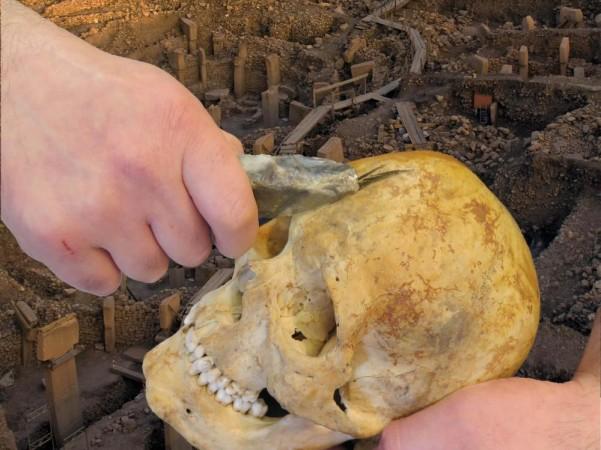
Skulls bearing grooves have been uncovered during field work at Gobekli Tepe, an 11,000-year-old site located in south-eastern Turkey. Archaeologists said the human skulls, which date back to the neolithic period, might have once dangled from the world's oldest temple.
Three adult skull fragments with grooves and some bones were excavated. It seems like they were carved with a 'flint' after the skulls were defleshed. The defleshing act was effortless as evidenced by the multiple scrape marks demarcating the muscles being cut off from the place where it once were connected to the bone.
Some intentional carvings stand distinct amongst other marks on the skull. "The carvings are very deep lines in the bone and are definitely intended," said Julia Gresky at the German Archaeological Institute in Berlin told The Guardian. "It's the first evidence we have for carved human skulls anywhere."
The excavations at the site began in mid 1990s. As many as eight oval buildings and two T-shaped limestone pillars were found engraved with carvings of people and animals at the site. It is being said that the grooves and holes were made with an intention to hang these skull on a cord.
The people who lived there may have suspended the skulls of their ancestor or enemies. Some carvings from the pillar depict a human who had just lost his head. "They think the power from the dead is going to the living," said Gresky told The Guardian.
The site basically captures the transformation of a man from being a hunter to a farmer. The people then had not tamed animals or cultivated anything but had been using the resources around that place.

















